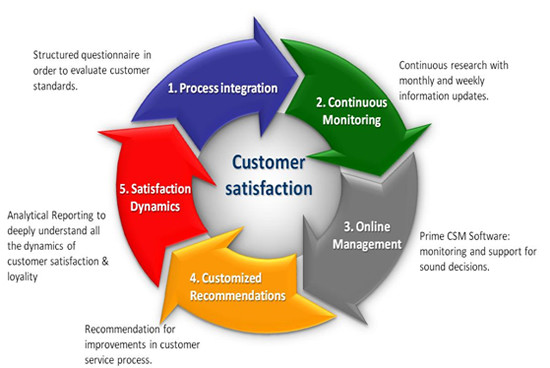Introduction to Marketing and Consumer Needs
Understanding marketing and consumer needs is crucial when analyzing whether marketing aims to create or satisfy these needs. Marketing has evolved significantly over time, from simple trade-based exchanges to a complex managerial process. A market comprises of potential customers sharing a particular need or want that can be satisfied through exchange relationships. Marketing, therefore, involves activities directed towards creating, communicating, delivering, and exchanging offerings that have value for customers, clients, partners, and society at large.
The traditional view of marketing considered it primarily as a means to push products onto customers, often without considerable regard for the underlying needs or wants. Contrast that with today’s perspective that sees marketing as a value creation and delivery sequence, focusing on identifying and fulfilling customer needs throughout the entire business process. This evolution of marketing from mere trade to a value-driven enterprise reflects the increasing importance of understanding consumer behavior and needs within the business landscape.
Does Marketing Create or Satisfy Needs?
According to the marketing concept, companies should analyze the needs of their consumers and then make decisions to satisfy these needs, rather than the needs of the sellers. This concept places the focus squarely on the customers, which is pivotal to the success of any business in the modern market. However, an intriguing question arises: Does Marketing Create or Satisfy Needs?
Marketing has always grappled with the dilemma of whether it creates new needs or simply satisfies existing ones. The main quote from the LinkedIn source “Marketing shapes consumer needs and wants… Marketing has a strong influence on what the customers buys.”, supports the argument that marketing plays a critical role in molding consumer behavior. In essence, it can sharpen, alter, or even create consumer needs.
On the other hand, some argue that consumer needs are innate or preexisting and that marketing’s principal function is to identify these needs and present solutions that satisfy them. In truth, marketing operates within the interplay of shaping and satisfying consumer needs, profoundly influencing the buying process.

Source: LinkedIn
Understanding this intricate relationship is critical for businesses aiming to establish a strong market presence and build lasting relationships with their customers.
Marketing’s Influence on Consumer Perception
As touched upon in the aforementioned LinkedIn article, marketing doesn’t just sell products or services; it also significantly influences consumer perception. Through strategic messaging and branding, marketing can imbue a product with a desirable image or status that resonates with consumers, in essence creating a perceived need.
The strategies employed in marketing have a bearing on how consumers perceive their own needs and how they prioritize them. Here lies a significant ethical responsibility for marketers to ensure that their influence doesn’t manipulate consumers detrimentally.
The Strategies Marketers Use to Create and Satisfy Needs
In the pursuit of aligning products with consumer needs, marketers employ a variety of strategies:
- Push strategies: These involve taking the product directly to the customer via distribution channels to ensure visibility.
- Pull strategies: Pull strategies encourage consumers to actively seek out a brand through tactics like promotional campaigns.
Advertising plays a crucial role within these strategies, not only informing potential customers about products but also often creating a perceived need for them. This also raises ethical implications—marketers must navigate between persuasively presenting their product and misleading or exploiting consumers.
According to another LinkedIn source, “Needs preexist marketing, and it’s up to the marketer to understand consumers’ needs in order to influence them into purchasing products.” This quote underscores the responsibility of marketers to ethically engage with the real needs of consumers and not artificially create demand without providing genuine value.
Understanding and Identifying Customer Needs
Identifying and understanding customer needs is a foundational aspect of effective marketing. Maslow’s Hierarchy of Needs provides a lens through which we can understand customer motivations and how these can be addressed through marketing.
- At the base of Maslow’s pyramid are basic physiological needs, moving up through safety, belonging, esteem, and self-actualization.
- Marketers use this framework to develop strategies that appeal to the appropriate level of need that their target market is likely experiencing.
The assertion that marketing merely reflects preexisting needs ties into this theoretical perspective, suggesting that successful marketing strategies are those that align with the inherent levels of human need.
The Psychology of Needs in Marketing
The intricate relationship between marketing and consumer needs is further clarified through a psychological lens, wherein marketing is seen to “pinpoint a specific person along with their unique collection of needs and aligns communications to demonstrate to the consumer that the product reflects a new facet of their evolving needs.” This understanding reveals the depth at which marketing engages with consumer behavior, highlighting the importance of tailored communications in addressing the intricate web of consumer desires.
Current Trends and the Future of Marketing in Need Creation and Satisfaction
The landscape of marketing undergoes constant transformation, influenced heavily by technological advancements and changing consumer behaviors. Social media, for instance, has dramatically reshaped the way needs are both created and satisfied. It has become a pivotal platform for consumers to discover products and services that they didn’t know they needed, effectively creating new desires.
Regarding future predictions, marketing is likely to become even more personalized and data-driven, reflecting an increased understanding of individual consumer behavior and leveraging it to anticipate needs even before they are fully realized by consumers themselves.
Conclusion: Balancing the Creation and Satisfaction of Needs
In summary, marketing exists in a spectrum between creating and satisfying needs. Effective marketing strategies often acknowledge the baseline needs of consumers but also push the boundaries to suggest new ways these needs can be fulfilled. The key is for marketers to strike a balance by providing genuine value to consumers while maintaining ethical standards and business objectives.
It is also essential to foster consumer awareness and education in the marketing ecosystem, empowering consumers to make informed choices in the marketplace. As marketing continues to evolve, the focus on value creation and the ethical considerations surrounding it will become even more pronounced.
Understanding that marketing is not a one-size-fits-all approach will ensure that businesses and marketers alike can adapt and thrive in the complex dynamic between consumer needs and the marketing strategies designed to satisfy them.


